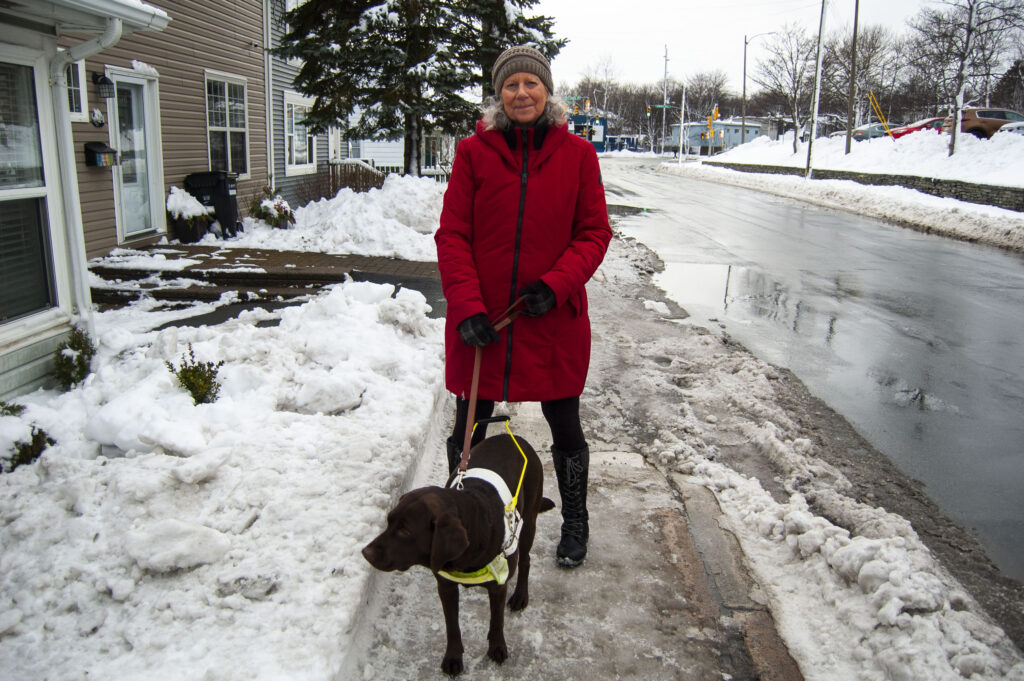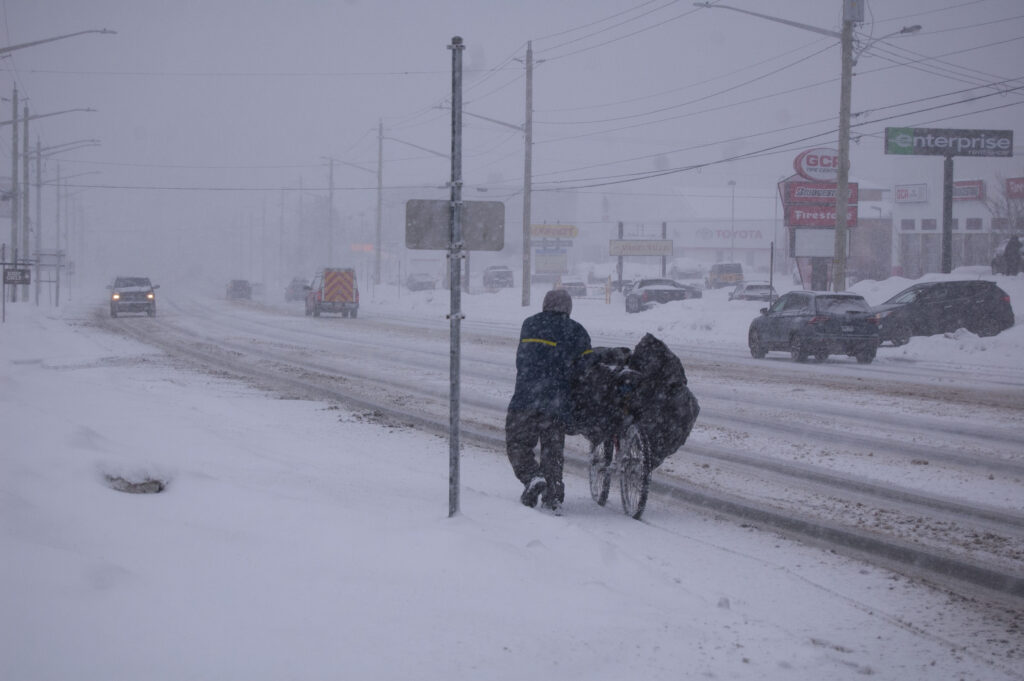Despite an increased snow-clearing budget, advocates say St. John’s still has a long way to go

Chad Feehan
Kicker
The St. John’s snow-clearing budget has increased this year, but a local advocate says St. John’s remains an inaccessible city for those with disabilities.
The city of St. John’s snow-clearing budget for 2023 has seen a seven per cent increase compared to 2022 with an emphasis on pedestrian crossings. Extra equipment and employees have been assigned to the effort, which will cut down the time it takes to get snow cleared.
Response time to clear pedestrian crossings in the city has been lowered from 144 to 72 hours.
Anne Malone, who is legally blind and uses a service dog to navigate the city, does not consider the budget increase to be a meaningful step towards accessibility for people with visible and non-visible disabilities.
“The only way I can get where I want to go, which is just a couple of thousand meters away from us, is to walk with moving traffic in the road. It’s now been almost 48 hours since a major snowfall,” said Malone, pointing to a snow-covered sidewalk on King’s Bridge Road.
“This is a high traffic area with a lot of industrial vehicles, and we have vulnerable human beings walking in lanes of traffic, again, for another winter…I’m not seeing much of a change at all.”
Coun. Sandy Hickman, lead councillor on public works in St John’s, says the response times are affected by the amount of falling snow and the amount that is already on the ground. Major snowfalls, like the last major snowfall in January, may take even longer.
“If you had 10 or 15 centimetres of snowfall on top of snow on the ground, 72 hours would definitely be achievable…no two storms are the same, that’s for sure.”
“Perhaps some streets and roadways should be one-way only during winter. Perhaps speed limits should be dropped seasonally.”
Anne Malone
More needs to be done to ensure the safety of pedestrians during the winter months, says Malone.
“…the interest of pedestrians are every bit as valuable as the interests of drivers,” said Malone.
“Perhaps some streets and roadways should be one-way only during winter. Perhaps speed limits should be dropped seasonally.”

For some, paid mobile apps like BlindSquare are a step in the right direction.
Malone, however, is not entirely convinced.
“If I had to pull out my phone in these conditions, put in headphones and all of that stuff to engage with an app, I’m putting myself in other dangers.”
Hickman says people with disabilities are “top of mind” year-round when it comes to city access, but says having all sidewalks and roadways opened almost immediately after a snowfall is “absolutely impossible.”
“You have to be realistic in your budgeting and in your allocation of resources,” said Hickman. “Not every street gets done immediately, some take a little longer.
“There’s a very good network of cleared sidewalks around the city. Not every street will have its sidewalks plowed…that’ll never happen, I can almost guarantee that.”
“We need representation at the tables where decisions are made…if we are not at the table our reality is not really being communicated.”
Anne Malone
For Malone, the issues of accessibility today are too similar to those of decades ago.
“People have been advocating for disability access in St. John’s since the 1960s,” said Malone. “We haven’t made that much progress…for a visually impaired person to get around in this city is next to impossible.”
According to Malone, meaningful change follows adequate representation.
“We need representation at the tables where decisions are made…if we are not at the table our reality is not really being communicated,” said Malone.

Be the first to comment